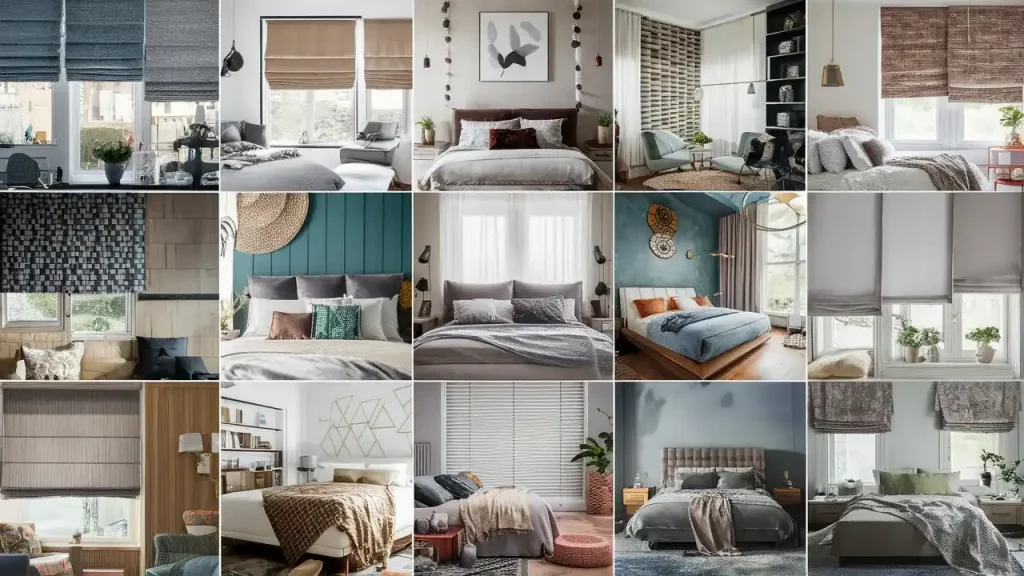Is your backyard ready to turn rainy days into something beautiful, functional, and eco-friendly?
Rainscaping isn’t just about drainage—it’s about transforming your outdoor space into a serene, water-wise sanctuary. Whether you’re into lush gardens, modern patio furniture, or stylish back porch décor, these ideas are designed to inspire.
From charming rain barrels to chic permeable pavers, we’ve got 21+ ways to help you design the modern outdoor living space of your dreams while staying environmentally responsible.
1. Rain Gardens
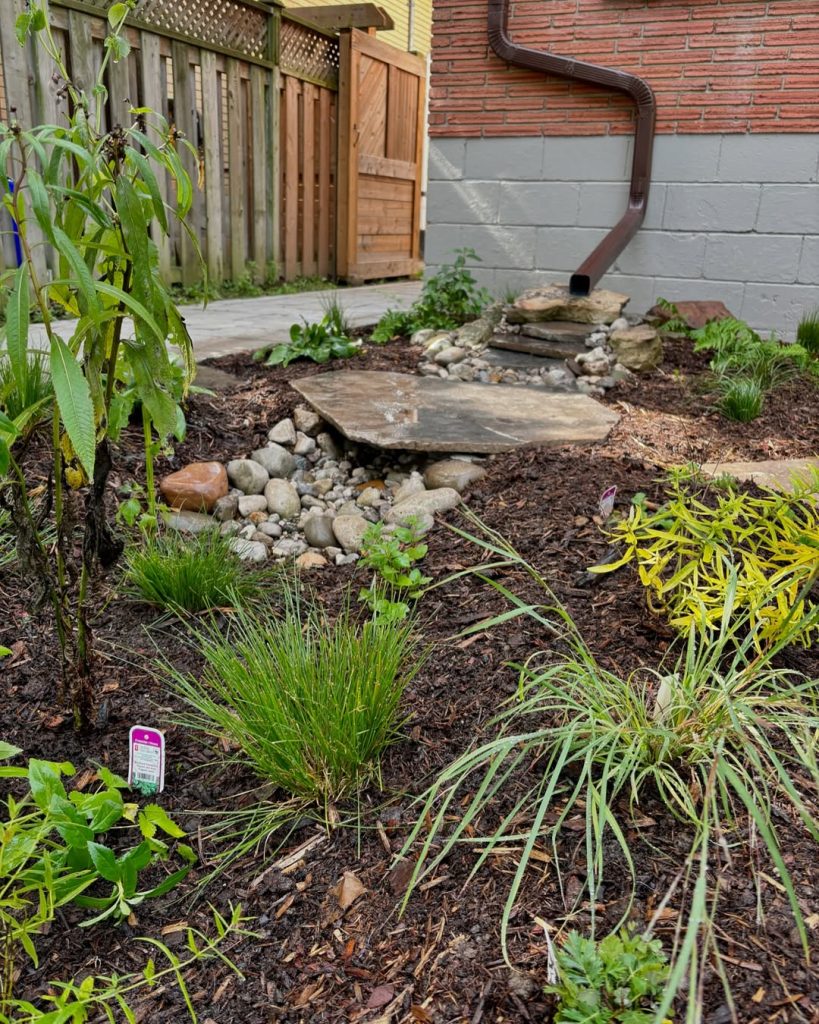
A rain garden is a shallow, planted depression in your yard designed to capture rainwater runoff—typically from rooftops, driveways, or downspouts—and let it slowly soak into the ground. But don’t let the word “depression” fool you. These gardens are anything but dull.
They’re lush, colorful, and full of life, featuring native flowers, grasses, and even shrubs that thrive in both wet and dry conditions. Think black-eyed Susans, purple coneflowers, and blue flag irises—plants that not only absorb water but attract butterflies and hummingbirds too.
Perfect for those who love vibrant back porch decor and sustainable beauty, rain gardens reduce erosion, filter pollutants, and create a dreamy landscape right in your own backyard.
They’re especially useful if you live in a region that sees a lot of rainfall or has areas of poor drainage. And with a little planning, you can even shape your rain garden into a modern, artful centerpiece.
Whether you’re going for a cozy cottage-core vibe or clean modern lines, a rain garden can anchor your entire outdoor living design.
2. Decorative Downspout Diverters
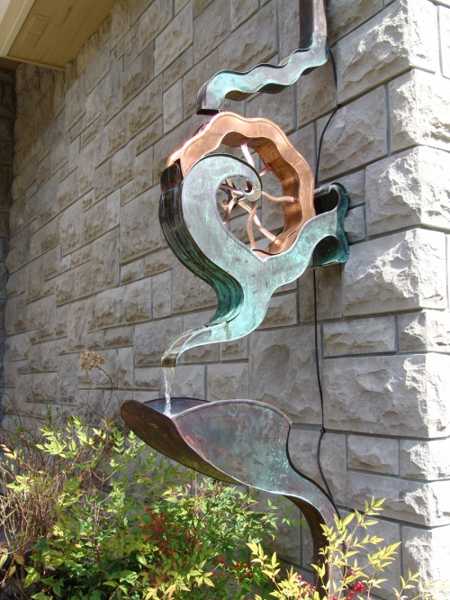
Downspout diverters are one of the simplest ways to control rainwater—but why not make them stunning too? Instead of basic plastic extensions, consider decorative diverters that add personality and function to your space.
Rain chains, for instance, are a beautiful Japanese-inspired alternative that turns runoff into a tranquil water feature. These cascading metal links or cups guide rainwater down from your gutters into a basin or garden bed while producing a soft, soothing sound.
If your aesthetic leans toward modern back porch ideas, look for sleek copper or brushed steel designs that blend well with minimalist landscaping or industrial-chic décor.
Want something more whimsical? There are sculptural diverters shaped like leaves, animals, or vines that make a playful statement near your patio or deck area.
By redirecting rainwater in style, you’ll not only prevent soil erosion but also add artistic flair to your exterior. It’s a small update with big design impact.
3. Permeable Pavers for Driveways and Paths
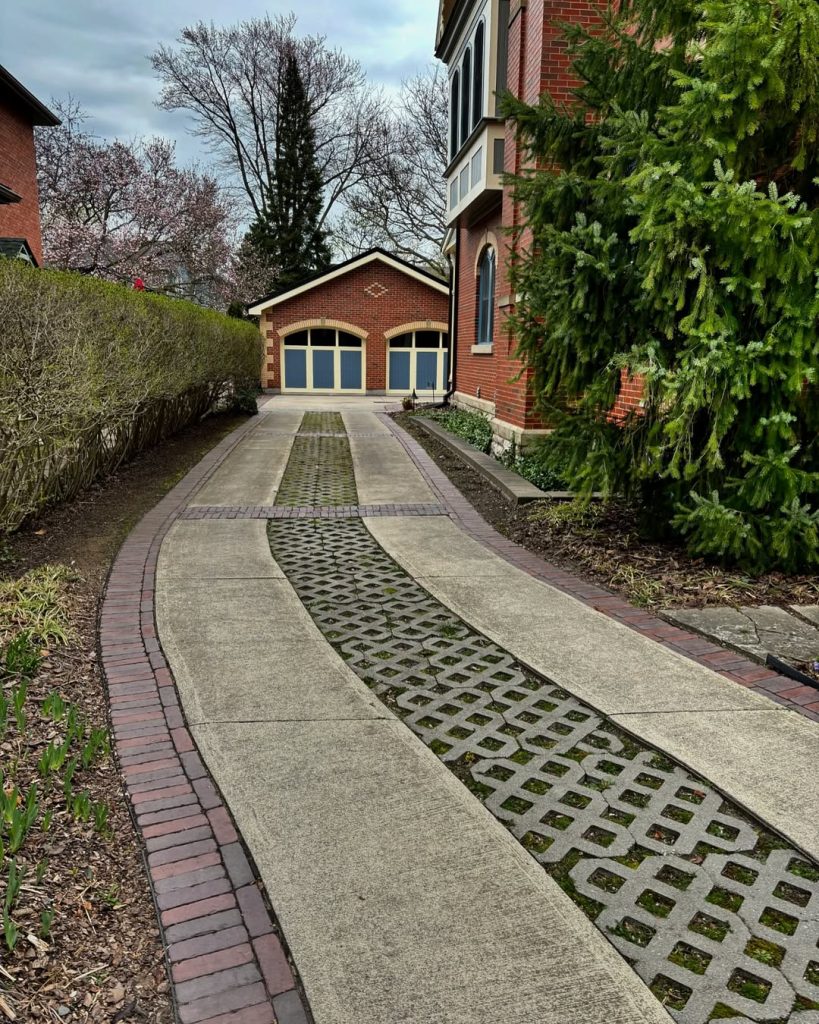
Swap out solid concrete for permeable pavers and turn your walkway or driveway into a stormwater superstar. These modern surfaces are made with porous materials—like gravel, permeable concrete, or interlocking bricks—that let water flow through the surface and into the soil beneath.
Not only does this reduce runoff and flooding, but it also creates an eye-catching, modern patio furniture-friendly foundation for your outdoor space.
Use permeable pavers to outline winding garden paths or create elegant entryways to your backyard. You can play with color, pattern, and texture to match your overall style—be it rustic farmhouse or sleek contemporary.
They pair perfectly with container plants, raised garden beds, or cozy outdoor seating areas, adding charm and purpose in equal measure.
Bonus: They’re durable, low-maintenance, and available in both DIY and professional install options.
4. Barrel Chic: Stylish Rain Barrels
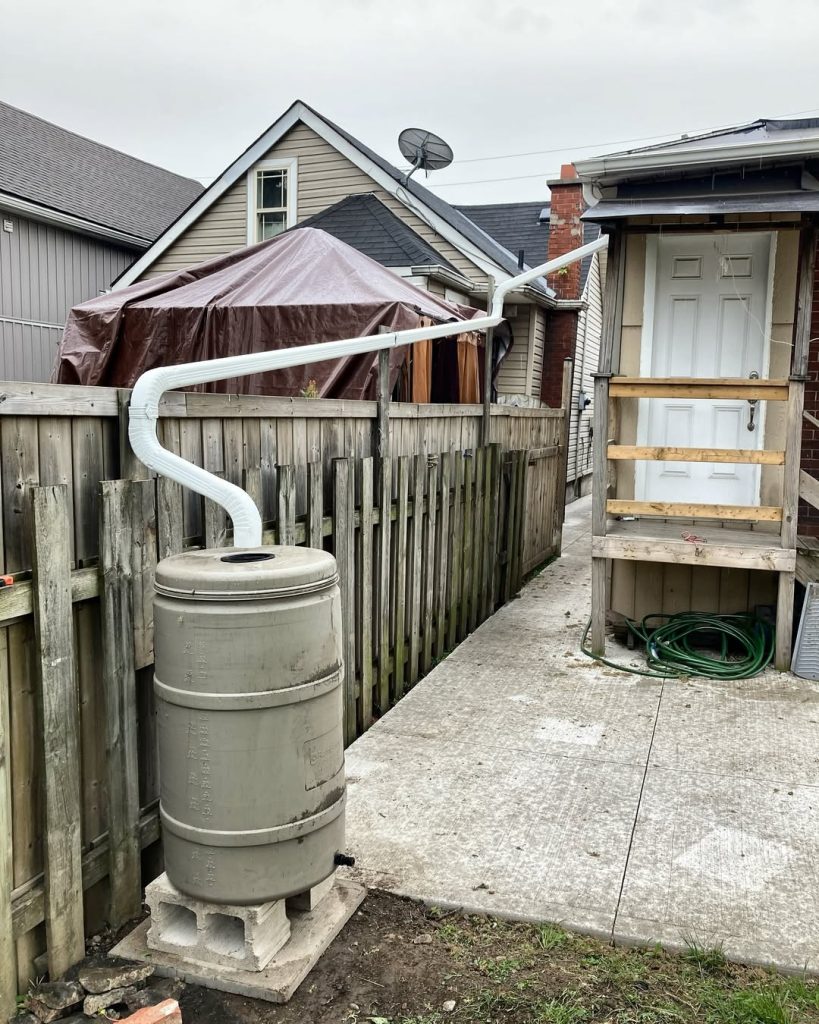
Rain barrels are a smart way to collect and reuse rainwater—but they can also be a surprisingly stylish addition to your back porch or garden corner.
Gone are the days of plain, plastic drums. Today’s rain barrels come in an array of colors, materials, and designs to suit your outdoor aesthetic. Think wooden whiskey barrels, ceramic-look containers, or even barrels wrapped in trellis for a vertical garden effect.
Place one under a downspout to collect water from your roof and use it to hydrate your flower beds, wash your patio, or top off a birdbath.
They’re eco-friendly, budget-friendly, and an excellent solution for those who want to support sustainable outdoor living. Plus, they’re a great match for back porch decor that emphasizes nature and mindfulness.
Pro tip: Elevate your barrel on a decorative stand or stone base and add a spigot for easy watering access.
5. Native Plant Landscaping
Source
When it comes to rainscaping, native plants are the real MVPs. These plants are naturally adapted to your local climate and soil, making them resilient, low-maintenance, and water-wise.
By designing your landscape around native species, you’ll be creating a biodiverse haven that can thrive even during periods of drought or heavy rain. Not to mention, you’ll attract butterflies, birds, and other pollinators that help your garden truly come alive.
Depending on where you live, you might consider purple coneflower, switchgrass, goldenrod, or even prairie clover. You can plant them in sweeping drifts or tuck them into borders around your patio or porch.
Best of all? Native plant gardens don’t just help manage rain—they look absolutely gorgeous all year round, adding a natural softness to modern outdoor living spaces.
It’s beauty with a purpose.
6. Bioswales with a Designer Touch
Source
Think of a bioswale as a stylish, eco-savvy trench. These landscape features are gently sloped and filled with plants, rocks, and mulch to slow down stormwater and help it soak into the earth.
But here’s the fun part: they can be absolutely stunning. With the right design, a bioswale can look like a natural stream or dry riverbed that winds through your yard, adding movement and interest to your overall layout.
Choose stone accents that complement your patio tiles or back porch furniture. Plant with texture in mind—grasses, reeds, and groundcovers offer visual contrast and seasonal interest.
Bioswales are especially helpful in larger yards or areas where water tends to collect after a downpour.
They’re functional art—and perfect for a landscape that balances beauty with responsibility.
7. Butterfly and Bee-Friendly Buffers
Source
Got a driveway edge or fence line that needs some love? Transform it into a pollinator-friendly buffer using rain-absorbing native plants and shrubs.
This kind of buffer planting slows down rainwater as it moves across your property, giving it time to sink in instead of running off. But it also doubles as a gorgeous natural border filled with color and movement.
Choose bright, nectar-rich flowers like milkweed, bee balm, and yarrow to invite butterflies, bees, and hummingbirds into your yard. Add taller grasses or shrubs for privacy and structure.
It’s an easy way to layer charm and function into your outdoor space—especially if you’re looking to create cozy zones around your back porch or outdoor seating area.
Even a narrow strip can make a big impact.
8. Gravel Gardens
Source
Minimalist, chic, and surprisingly versatile—gravel gardens are a top pick for modern backyards and patios that need to stay dry and stylish.
These gardens use a base of gravel or crushed stone with drought-tolerant plants artfully arranged on top. The gravel absorbs rainfall, reduces erosion, and helps keep the soil cool and stable.
If your taste leans modern, this is where rainscaping meets clean-line design. Pair with sleek patio furniture, sculptural succulents, and pops of greenery for a look that feels curated yet natural.
Gravel gardens are also incredibly low maintenance. There’s no need to mow, fertilize, or water extensively, making them ideal for busy homeowners or vacation properties.
It’s like a zen garden—with purpose.
9. Water-Loving Trees for Shade and Drainage
Source
If your yard struggles with soggy spots or poor drainage, planting the right tree can be a game-changer. Water-loving trees help draw excess moisture out of the soil while offering gorgeous shade and structure to your landscape.
Look for trees like red maple, river birch, or bald cypress—species that thrive in moist conditions and bring visual drama to your yard.
These trees work beautifully near rain gardens, bioswales, or the edges of patios where water tends to collect. They also add height, privacy, and seasonal beauty, creating a true outdoor sanctuary.
Place a cozy seating area or fire pit beneath the canopy for a peaceful retreat that ties into your overall outdoor living aesthetic.
Just be sure to plant with proper spacing and consider root systems when designing around foundations or walkways.
10. Vertical Rainscaping: Living Walls
Source
Short on yard space? Go vertical! Living walls—also known as green walls—are a clever and beautiful way to manage rainwater while adding a bold visual element to your outdoor design.
These walls feature plant pockets or mounted planters that absorb rainwater and allow it to trickle down, nourishing each level of greenery. They can be installed on fences, garage walls, or even as freestanding dividers near patios and back porches.
Fill them with native ferns, flowering vines, or succulents for a vibrant, ever-changing display.
Living walls offer privacy, insulation, and natural beauty while also reducing runoff. And when integrated into your overall design, they become living works of art that connect structure with nature.
Perfect for city yards or small-space gardening with big personality.
11. Dry Creek Beds That Flow with Style
Source
Dry creek beds are a beautiful solution for directing rainwater away from your home or patio. Designed to mimic a natural stream, these features use decorative stone, river rock, and carefully placed plants to create a meandering, sculptural channel.
When it rains, water flows through the bed just like a creek, but when it’s dry, it still adds visual interest and texture to your landscape.
Dry creek beds are highly customizable and can be styled to suit rustic, woodland, or modern aesthetics. Use them to guide water to rain gardens or collection points while elevating your curb appeal.
Line them with ornamental grasses, hostas, or creeping groundcover for a lush look.
They’re functional, beautiful, and a great way to handle stormwater naturally—without sacrificing style.
12. Rain-Resilient Flower Beds
Source
If you love the color and fragrance of flowers, but your beds get soggy after every storm, it’s time to design a rain-resilient flower bed. These beds use strategic layering, drainage-conscious soil, and hardy plants to look beautiful even during heavy rains.
Start by choosing a slightly raised layout with rich, well-draining soil mixed with compost. Incorporate moisture-tolerant plants like daylilies, asters, bee balm, and Siberian iris—flowers that can handle wet feet without fuss.
Add edging with stone or brick to help define the area and guide water flow. Mulch with shredded bark or pine needles, which allow water to pass through while protecting the roots from rot.
This type of bed can be styled to complement your back porch decor or patio furniture layout, serving as a natural frame that blends aesthetics and functionality.
It’s also a great way to enhance curb appeal while managing runoff—especially in front yards or along walkways.
13. Charming Mini Wetlands
Source
Have a naturally low or soggy spot in your yard? Instead of fighting it, embrace it by creating a mini wetland—an enchanting, eco-friendly landscape feature that supports wildlife and filters water.
Mini wetlands typically include water-loving plants like sedges, rushes, cattails, and marsh marigolds. They thrive in areas that remain damp after rain, creating a lush, almost magical space in your yard.
You can border your wetland with large stones or decorative wood elements and even add a small bench or birdbath nearby to enjoy the view.
They’re a natural fit for rural properties or larger suburban yards but can be downsized for urban environments too.
Not only do mini wetlands absorb runoff, they also purify it—acting like a sponge that filters out pollutants and slows down the water before it enters nearby drains or streams.
It’s a nature-lover’s dream and a major conversation piece for your outdoor living setup.
14. Eco-Friendly Roof Gardens
Source
Rainscaping doesn’t have to be limited to the ground. If you have a flat or gently sloped roof—especially over a porch, shed, or garage—you can turn it into a vibrant eco-friendly roof garden.
These gardens are designed with lightweight soil, drought-tolerant plants, and drainage layers that capture and slow rainfall before it reaches your gutters.
Succulents, sedum, mosses, and hardy herbs are popular choices. Add a few pavers or tiles for visual structure and accessibility if your roof allows for occasional foot traffic.
Green roofs insulate buildings, reduce runoff, and create a calming natural view from above—perfect for pairing with your modern patio or outdoor kitchen area.
They also make a fantastic addition to homes in urban areas where ground space is limited but eco-conscious design is a priority.
15. Rainscaping with Raised Beds
Source
Raised garden beds are a staple for backyard vegetable and herb growers, but they also double as a rainscaping solution—especially in areas prone to heavy rain.
By elevating your planting space, you can prevent root rot and promote healthy drainage while keeping your plants thriving.
Build your raised beds with rot-resistant wood, stone, or recycled composite materials. Then fill them with well-draining soil enriched with organic matter.
These beds can be placed near patios, decks, or along walkways to help manage overflow from roofs and driveways. Add trellises or decorative fencing for a charming, organized look that ties into your overall back porch decor.
Raised beds are also perfect for stylish outdoor living areas. You can use them to define space, grow herbs for al fresco meals, or simply add color and interest around your seating zones.
16. French Drains with Flair
Source
French drains are one of the most effective ways to direct water away from your home or patio—but who says they can’t be pretty too?
A traditional French drain is a gravel-filled trench with a perforated pipe that carries water away underground. But with a little creativity, you can turn it into a functional design element.
Cover the trench with decorative river rock, colored gravel, or even groundcover plants that thrive in moist conditions. Create curves instead of straight lines for a more natural flow.
Place the drain along garden borders or beneath pathways to control runoff while keeping things visually appealing.
French drains are especially helpful in areas near back porch steps or where rain tends to pool after storms.
It’s the hidden hero of outdoor living spaces—and when styled well, you won’t even know it’s there.
17. Artistic Rain Sculptures
Source
Want to take your outdoor design to the next level? Consider a rain sculpture—an artistic piece that interacts with rainfall in a captivating way.
These sculptures are often made of metal, stone, or ceramic and are designed to move, drip, or channel water in an elegant or playful manner.
From spiral copper spouts to kinetic flower-shaped fountains, they turn a simple rainstorm into a backyard performance.
Install one near your garden path or as a focal point in a gravel bed. Some designs even integrate with rain barrels or downspouts to manage water while making a visual statement.
They pair beautifully with modern back porch ideas or minimalist patio furniture styles, adding a unique, creative twist to your space.
18. Container Gardens with Overflow Control
Source
Container gardens are ideal for small spaces—but with the right setup, they also become mini rainscaping tools.
Use pots or raised containers with good drainage and catch basins to collect and redirect overflow. Arrange them on patios, porches, or along pathways where they can capture runoff from roofs or overhangs.
Choose deep-rooted herbs like rosemary, lavender, or mint—or go for leafy greens and cherry tomatoes if you’re into edible gardens.
Stylish ceramic or stone pots blend perfectly with modern patio furniture and back porch decor, creating cohesive zones that are beautiful and practical.
By elevating and positioning your containers strategically, you create a small but mighty system that reduces runoff and adds greenery to every nook of your outdoor space.
19. Edible Rainscapes
Source
Yes, you can grow food and manage stormwater. Edible rainscaping blends form and function by incorporating fruits, veggies, and herbs into your rain-smart landscape design.
Raised beds, swales, and rain-fed irrigation systems make it easy to grow your own produce while controlling how water moves through your yard.
Plant kale, spinach, and lettuce in shady wet zones. Use strawberries or blueberries in drier berms and higher areas. Add herbs like basil or oregano along borders for easy picking.
This approach is especially appealing for families and foodies who want to connect with their garden on a deeper level.
Not only are you reducing runoff, you’re also creating a beautiful, useful garden space that supports your outdoor lifestyle.
20. Meadow Lawns
Source
Ditch the high-maintenance turf and let your lawn go wild—in a good way. Meadow lawns use native grasses and wildflowers to create a natural, low-water landscape that’s perfect for rainscaping.
These areas soak up stormwater, prevent erosion, and provide critical habitat for pollinators and birds.
Start by replacing part of your existing lawn with a blend of fescue, clover, black-eyed Susans, and butterfly weed. You can even create mowed pathways through the meadow for a whimsical, fairy-tale vibe.
Meadow lawns are especially effective in large yards, side lots, or areas near fences where water naturally collects.
They require minimal mowing and no fertilizing, making them a fantastic option for sustainable outdoor living.
21. DIY Rainscaping Kits
Source
If all these ideas sound exciting but a little overwhelming, don’t worry—there are plenty of DIY rainscaping kits that make the process easy and accessible.
These kits typically include everything you need to build a rain garden or rain barrel system, including plants, soil amendments, step-by-step guides, and even layout plans.
Some are offered through local conservation programs, nurseries, or eco-garden retailers.
Whether you’re a beginner or a seasoned gardener, kits help you create a professionally planned solution on a budget, without the guesswork.
They’re also a great project for families or anyone who enjoys hands-on weekend activities. Add your own decorative flair to make it your own and watch your outdoor space transform into something truly special.
22. Community Rainscaping Inspiration Boards
Source
Last but not least—don’t underestimate the power of community. Rainscaping doesn’t have to be a solo journey.
Many neighborhoods, cities, and online gardening groups host inspiration boards, idea swaps, or even group build days where residents share their experiences and designs.
Creating or joining a community board allows you to see real-life applications of rainscaping ideas, discover what works in your region, and connect with like-minded outdoor enthusiasts.
It’s also a great way to get inspired if you’re unsure where to start.
Sharing your own backyard transformation can also motivate others to take that first step toward sustainable outdoor living.
Who knows? Your back porch ideas or modern patio layout might be exactly what someone else needs to see.
Conclusion: Your Perfect Rainscaping Match Awaits
Rainscaping is more than a trend—it’s a smart, sustainable way to make the most of every rainy day. Whether you’re reimagining your back porch decor, upgrading your outdoor living space, or simply looking for creative ways to manage runoff, these 21+ ideas offer inspiration for every style and skill level.
You don’t have to do everything at once. Start with one idea that speaks to your space—maybe a stylish rain barrel, a native plant garden, or a charming dry creek bed.
Soon, you’ll find your yard not only looks better, but it works better too. Less runoff. More beauty. And a meaningful connection to nature with every drop.
Ready to turn your backyard into a rain-loving retreat? Pick your favorite idea and start planning today—your dream outdoor oasis is just one storm away.
